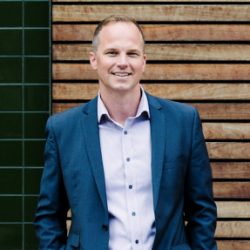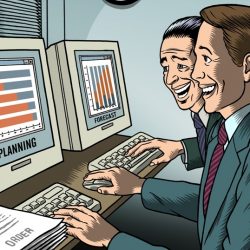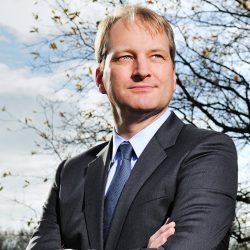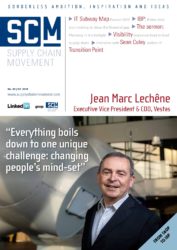The state of S&OP according to 7 thought leaders

S&OP continuous to be a popular topic that remains high on the agenda of executives. To assess the current state of S&OP, I interviewed 7 S&OP thought leaders at the end of 2016 for my blog supply chain trend. These leaders all have 20+ years S&OP experience and published books, whitepapers and articles in renowned magazines. A group, eligible to comment on the current state of S&OP. A group, that has shown passion to improve S&OP and a willingness to provide ideas for the future. Some key outtakes from these interviews are that:
- S&OP can’t be approached as a one size fits all, or simply implemented with a template and existing best practice checklist. S&OP requires hard work from senior leaders.
- S&OP is still too supply chain focused, although it covers much more than supply chain. It is a business wide solution, and should be taught as such in business schools.
- Technology and complexity go hand in hand. Increasingly complex organisations require technology to support effective S&OP.
- S&OP has the potential to not only improve business performance, but also to transform company culture. It is important to define a vision, a ‘WHY’ you’re implementing S&OP.
S&OP is not a silver bullet
When asked about the main fallacies in S&OP, thought leaders often refer to the fact that S&OP can’t be approached in one similar way for every business with the use of best practices checklists.
Sean Culey notes that “the process is often implemented in isolation with an expectation that it is a silver bullet solution, and it will be all rainbows and unicorns once it is in place. S&OP requires hard thinking, data integrity and disciplined execution by the senior team members.”
Erik Tinker says that, “designing S&OP and putting it in are easy”. However, “getting consistency across your S&OP design, org design, regional/BU and global levels, integrating new acquisitions, IT hierarchies, while keeping busy people engaged, isn’t always easy in a complex business”. Erik doesn’t believe that there is one set of best practices that fits all, although “there are some who claim based on all their self-proclaimed experience, they have the right way.”
Duncan Alexander agrees. “The number one fallacy is ‘one size fits all’. Yes the concept of joined up decision-making fits all, but the practicalities must be tailored to the needs of each organisation. Trying to copy the checklist of someone else’s best practice is not the answer.
S&OP requires continuous focus after the initial implementation. Jim Biel believes that “one of the biggest fallacies is that you can put it on auto-pilot and let it go after initial implementation.” He stresses that “If an organization is really serious about making this the primary way they plan, manage, and execute their business, the organization needs to staff and resource the process well throughout the life cycle of the implementation and on-going execution.”
Finally, Steven Hainey mentions that “S&OP requires substantial engagement from most functional areas along with senior management, NOT an overnight silver bullet, something which cannot be set on autopilot and forgot, and typically takes years and not months for it to become a supportive competitive advantage.” It is clear these thought leaders believe S&OP is not a silver bullet, they advise to use customized solutions rather than one size fits all checklists and they agree that S&OP requires continuous hard work and engagement from senior executives.
Too much Supply Chain focus
S&OP was developed over 30 years ago from a supply chain perspective. Over this time, S&OP has been mostly developed as a supply chain capability, not as an end to end business capability. This supply chain bias is still reflected in many maturity models, which are focusing on supply chain language. S&OP projects hardly ever start as a strategic enabler. In the worst case, somebody just thought it was a good idea, but often it starts from a burning platform of high waste, low customer service or high working capital. Somebody in supply chain will lead the S&OP initiative. S&OP conferences have a similar supply chain bias. Duncan Alexander, “I have virtually given up going to S&OP conferences because it’s the same people talking about the same things. S&OP experts should be presenting at finance conferences and executive leadership conferences, not supply chain conferences.”
The truth is, that S&OP is still largely unknown outside the supply chain and operations functions and the manufacturing industry. It doesn’t get a lot of traction from other business functions or the academic world outside supply chain. Steven Hainey sees some positives change “I see more companies moving away from the narrow-minded view that S&OP is a planning practice for just balancing supply and demand”. However, also Steven recognizes that “Non-supply chain professionals not properly trained in S&OP have a difficulty envisioning it as a platform to cover the financial strategies, future revenue growth approaches, marketing plans and other overarching business aspects having substantial impacts to organizations’ successes.
The thought leaders agree that education is key to change this supply chain bias. Jon Kirkegaard even thinks it is the biggest fallacy “that S&OP is only a supply chain solution and thus it is not taught in leading MBA / Finance and undergraduate business courses.” Erik Tinker would simply like to see that “S&OP is the just the way we do business, it’s not something new or unknown.” And Jim Biel sees “a day when most organizations see the simple value of integration and collaboration that S&OP ultimately tries to provide.” Duncan Alexander’s vision for S&OP is “that it is taught in business schools as the way to run a business, not a small part of a supply chain module.”
If S&OP wants to claim that it is a holistic business enabler, it will have to get rid of its supply chain bias. S&OP will have to start integrating more ideas, knowledge and language from other business functions to appeal to them. S&OP will have to show executives and academics at conferences and through research that it is the best way to align, integrate and deploy a company’s strategy.
Technology and complexity
Most thought leaders agree that at the start of an S&OP implementation you can get away with spreadsheet to show a proof of concept. But as soon as S&OP maturity or company complexity increases, S&OP requires appropriate technology support. According to Duncan Alexander, not investing in systems to support the process is one of the reasons why S&OP maturity stalls. “While you can get going on S&OP with PowerPoint and Excel, you need proper applications to embed the process, make it sustainable, and allow you to focus on decisions, not the process mechanics.”
One of the biggest S&OP fallacies, according to Dean Sorenson, “lies in the belief that complex manufacturers can achieve effective S&OP processes without re-engineering financial planning, budgeting forecasting and performance management processes. In complex manufacturers, it becomes increasingly difficult to establish mature forms of integrated planning and performance management processes with a patchwork of technology. There are too many moving and interconnected parts to make processes work effectively. “
The thought leaders agree that connecting all the moving S&OP parts effectively in increasingly complex business environments, seems hardly possible. Steven Hainey, believes that S&OP will be substantially transformed over the next decade, more due to technology than anything else. “We will see customers sharing demand changes, logistics individuals updating port, rail, and truck backups, supply or commodity disruptions, total cost of ownership changes through the entire supply chain, and much more. Instead of hearing about this type of intelligence through monthly meetings or e-mails, it will be fed real-time in members’ cloud based planning systems providing decision makers exception reports on their predefined parameters.”
Beyond S&OP: transform company culture
Sean Culey and I both believe S&OP can be used for larger purposes than the development and execution of great plans. Sean Culey would like to see “a recognition of the cultural transformation potential of S&OP.” He believes that ”by emotionally engaging in a process that has alignment, integration, openness, collaboration and communication at its core, the S&OP team should be setting the standard and leading the way. They should also endeavour to ensure that their respective teams also behave in a similar manner.”
My personal vision is for S&OP to contribute not only to strategy execution and company performance, but also to a positive company culture, employee engagement and even wellbeing. Employees who are informed on corporate goals and strategy are more engaged. We further know that a certain mindset and behaviours that are effective for S&OP, also improve individual life satisfaction and wellbeing. I recently published an article on this topic in Foresight; How to Shape a Company Culture with S&OP. Leaders who authentically believe in these potential benefits of S&OP, will emotionally engage and will approach an S&OP implementation with a drive to change behaviours and company culture. This requires a clear S&OP vision that goes beyond supply chain or planning.
Sean Culey mentions that the lack of executive knowledge on ‘Why’ to implement S&OP “is an often-overlooked attribute to stalling maturity”. And to answer, “because the supply chain director or a consultancy firm says so”, just doesn’t cut it. He advices to take a step back to “engage with all the stakeholders to clearly understand why you are doing this. Once the ‘why’ is clear, the ‘how’ and ‘what’ will be also. Once the ‘why’ is clear, resistance to this process will fade away, and passion and engagement will increase.”










